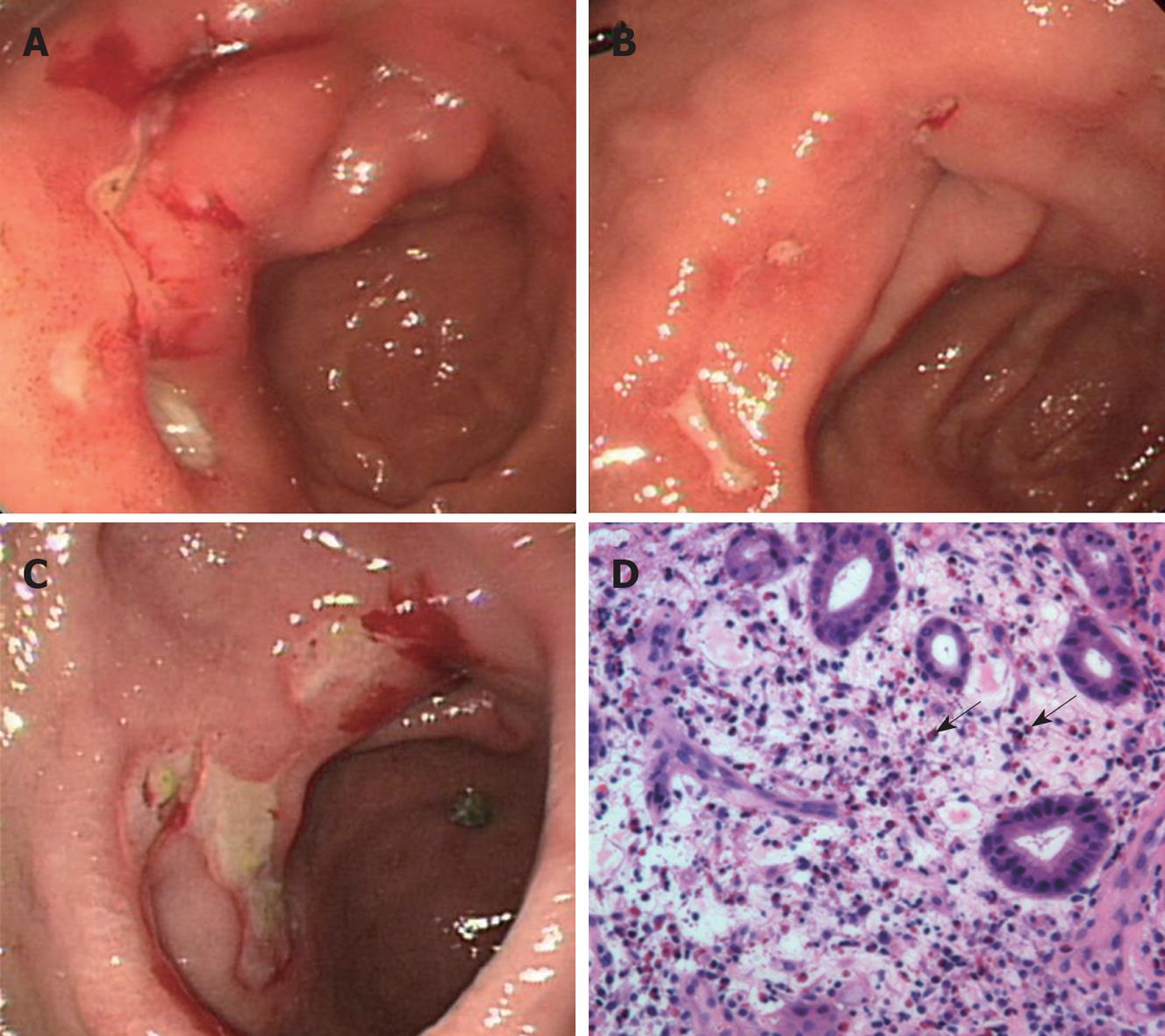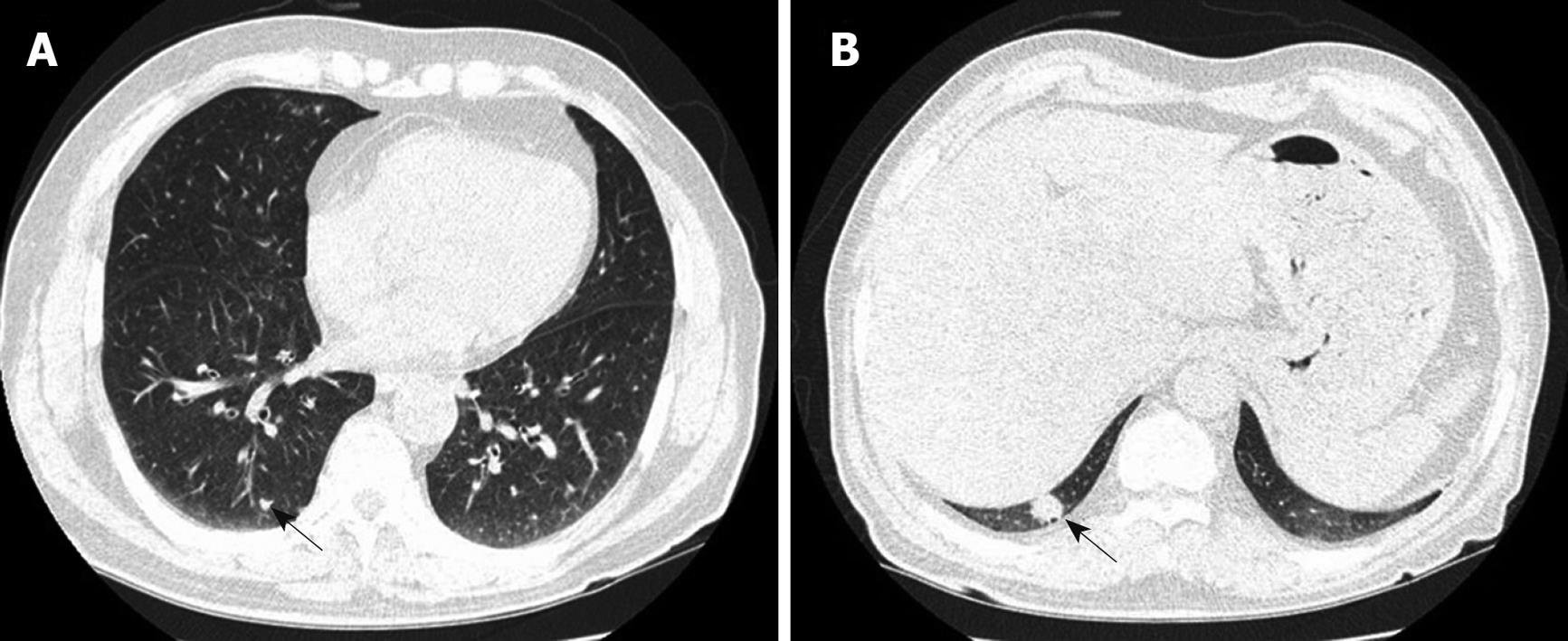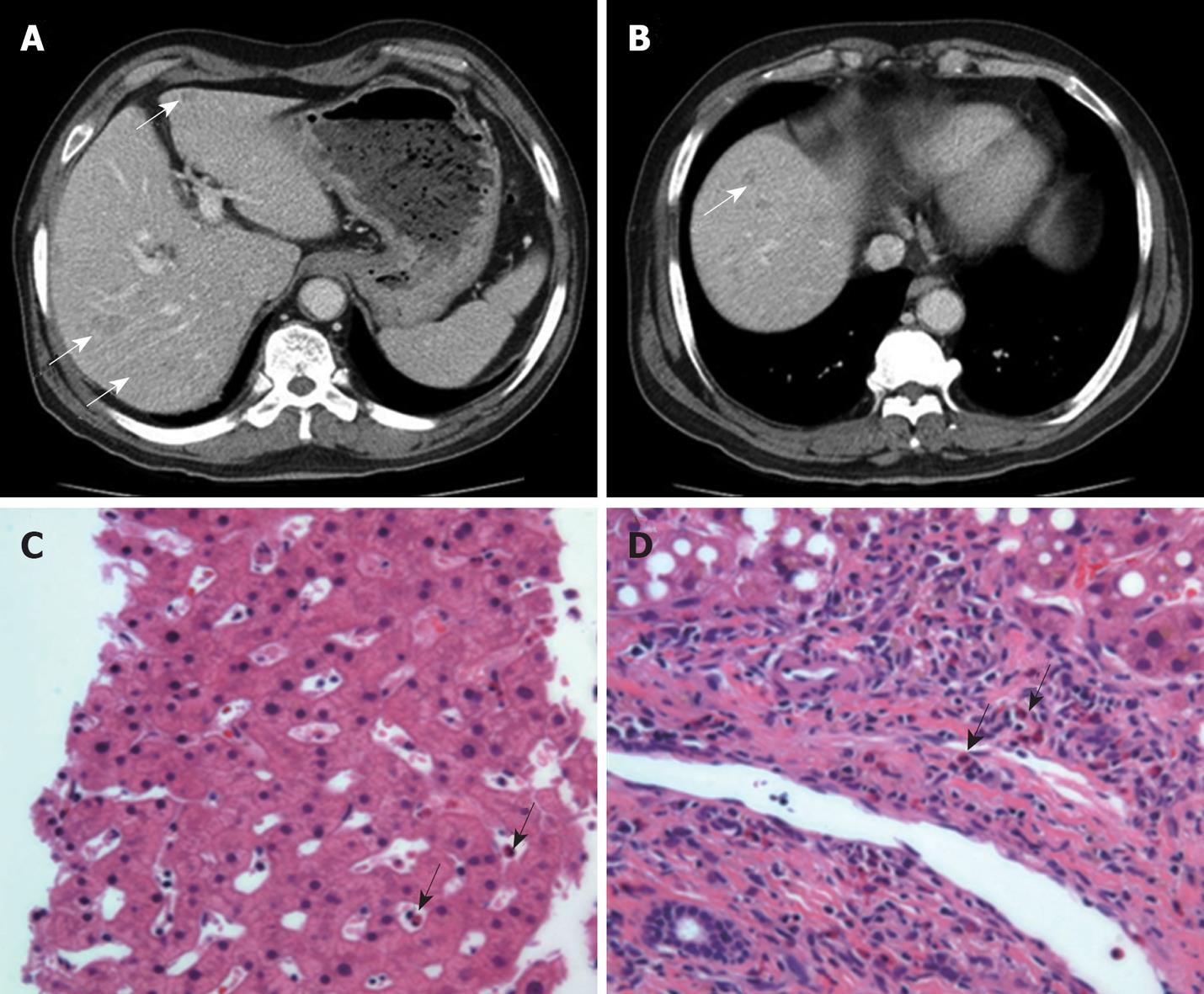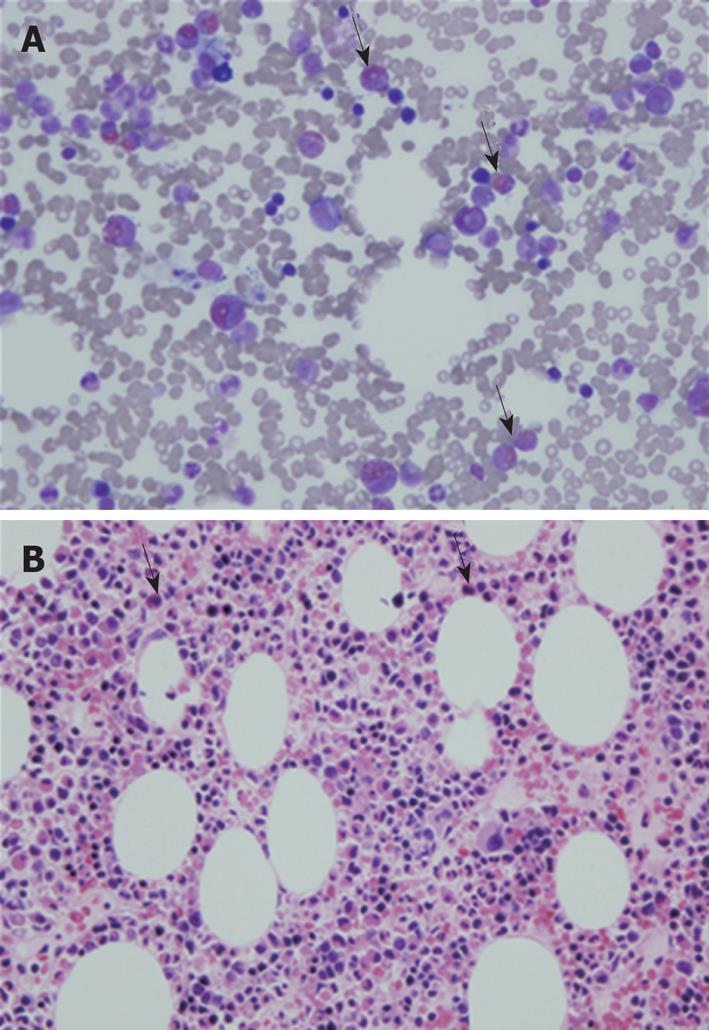Copyright
©2009 The WJG Press and Baishideng.
World J Gastroenterol. Dec 28, 2009; 15(48): 6129-6133
Published online Dec 28, 2009. doi: 10.3748/wjg.15.6129
Published online Dec 28, 2009. doi: 10.3748/wjg.15.6129
Figure 1 Esophagogastroduodenoscopy (EGD) and biopsy findings.
A: Initial EGD findings revealed several active gastric ulcers in the antrum of the stomach; B: In the EGD findings after 2 mo, multiple gastric ulcers were still noticeable with only slight improvement; C: In the EGD findings after 14 mo, multiple gastric ulcers were still found in the antrum; D: Biopsy findings revealed prominent eosinophilic infiltrations > 20 cells/HPF (arrows) (HE stain, × 400).
Figure 2 A chest CT scan showed very tiny nodules in both lungs (A) and approximately 15-mm-sized nodular lesions in the posterior basal segment of right lower lobe (B) (arrows).
Figure 3 Abdominal-pelvic CT scan and liver biopsy findings.
A, B: There were multiple, small, ill-defined low densities found in the liver (white arrows); C, D: Microscopically, eosinophilic infiltration was noted in the sinusoid and the portal tract (black arrows) (HE stain, × 400).
Figure 4 Bone marrow examination.
A: In the bone marrow aspiration smear, the M:E ratio was 3.8:1 and the eosinophil count was elevated to 22.2% (arrows); B: Bone marrow biopsy findings showed eosinophilic hyperplasia (arrows) with increased cellularity of 70% and erythroid, myeloid, and megakaryocytic cell lineages with a normal distribution pattern (HE stain, × 400).
- Citation: Park TY, Choi CH, Yang SY, Oh IS, Song ID, Lee HW, Kim HJ, Do JH, Chang SK, Cho AR, Cha YJ. A case of hypereosinophilic syndrome presenting with intractable gastric ulcers. World J Gastroenterol 2009; 15(48): 6129-6133
- URL: https://www.wjgnet.com/1007-9327/full/v15/i48/6129.htm
- DOI: https://dx.doi.org/10.3748/wjg.15.6129
















